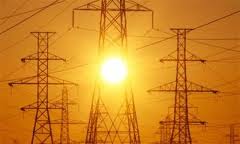Labor’s assumed win in the Queensland state election could be the death-knell of the Galilee Basin coal province, but rooftop solar looks to be a big winner, and it may also finally provide the launch-pad for large-scale renewable energy industry in the state.
 The Labor government unveiled its solar and energy policy just a week before the election, and because no one really thought they had a chance to win power, not a lot of attention was given to it.
The Labor government unveiled its solar and energy policy just a week before the election, and because no one really thought they had a chance to win power, not a lot of attention was given to it.
But it includes some fascinating policy initiatives, even if the details were not provided – probably due to the party’s lack of resources with just a 9-member team pre-poll.
Chief among them is a goal to connect a million houses to solar (the state is already half way there with more than 400,000 houses connected, and 1.2GW of rooftop solar), and to ensure that there is a fair price for solar.
Labor also aims for a 50 per cent renewable energy target by 2030, and intends to kick-start this with a reverse auction for 40MW of “baseload” renewables. It envisages exporting renewable energy expertise, rather than coal.
Other initiatives including encouraging local councils to generate their own electricity, and introduce storage, to offset the huge costs of transmission.
Labor leader Annastacia Palaszczuk said the party will look to copy the ACT in establishing a reverse auction program – initially for 40MW of “base-load renewable energy including solar power”, and then for more large scale renewable energy plants.
“By encouraging investment in base-load solar power stations through our renewable energy auction, we will leverage private investment to create the high-tech renewable energy jobs of the future right here in Queenslandm,” she said in here policy release.
“We will also initiate a renewable energy study to investigate measures to create an export-orientated renewable energy economy here in Queensland.”
The ACT is using the reverse auction system to construct up to 500MW of renewable energy and meet its target of 90 per cent renewable energy by 2020. The results of its tender for 200MW of wind capacity will be announced on Friday. We previewed the possible winners here.
“We understand that technological advances for solar-generated power storage have changed the game,” Palaszczuk said, suggesting the party is looking at a solar tower plus storage combination, or maybe just PV and storage. “As a result, policies to promote renewable power are not just kinder for the environment, they make sound economic sense and will generate jobs.”
So far, apart from a couple of turbines built years ago at Windy Hill, and the much delayed 44MW “solar booster” at the Kogan Creek power station, there are no large scale renewable energy projects in Queensland apart from some well established biomass projects associated with sugar farming, and some hydro projects.
Clearly, though, there is a bunch of projects in the pipeline, with at least one dozen 100MW plus solar PV projects seeking or obtaining planning approval.
Palaszczuk noted that reverse auction had been successful in South Africa and Brazil, and they have also been widely deployed elsewhere in Europe, Asia and the Americas. A recent auction in Dubai obtained a record low price for solar PV (5.1c/kWh in its first year), and the same company bid a record low price for a solar tower and storage project in South Africa.
“This is a simple and sensible way to generate power and the jobs that go with it without any major outlay from taxpayers and without selling assets and their $2 billion a year revenue stream,” she said.
Palaszczuk promised to make an independent authority set the feed-in tariff for new customers, instead of electricity retailers. Many solar households feel they are being penalized in Queensland, with those in the south-east corner often unable to get any tariff for exports back into the grid, and for large systems, unable to export back into the grid at all.
Around one third of the homes in Queensland have rooftop solar systems under this arrangement, with no or little tariff. Most of the others are on the 44c/kWh premium tariff.
Labor has flagged getting a different authority to look at those tariffs. Currently, the Queensland Competition Authority has been setting guidelines for tariffs, and it is not clear that the Productivity Commission would be any more enlightened. Regulators throughout Australia have simply refused to dial in the benefits of solar PV into their calculations, unlike in the US, as we explained here.
The signature policy, of course, is the decision not to sell or lease the state-owned energy assets. More likely, the new government would look to combine Energex and Ergon into the same company – which may create an interesting cultural clash about the transition to distributed energy and storage – particularly with the push for the number of solar homes to jump to 1 million, and the push into localized energy and energy storage. The two fossil fuel generators – Stanwell and CS Energy – will also be combined.
It is not yet clear who the Labor energy minister will be. Curtis Pitt held the portfolio when Labor was in Opposition, but that was in addition to his other roles as Leader of Opposition Business, Shadow Treasurer and Shadow Minister for Trade, Energy and Water Supply, Main Roads, Aboriginal and Torres Strait Islander Partnerships, and Sport and Recreation. He will likely to Treasurer in the new government.








